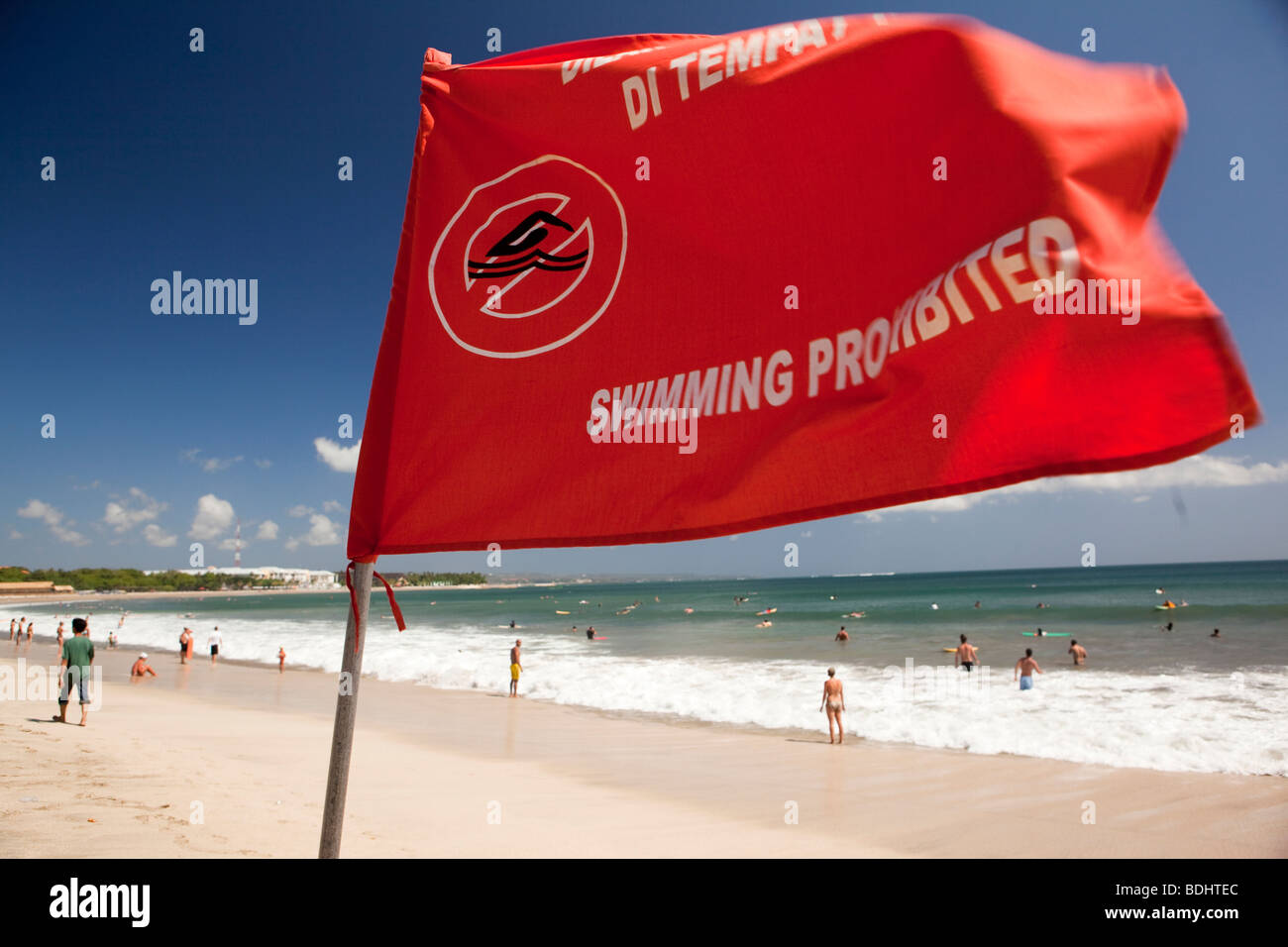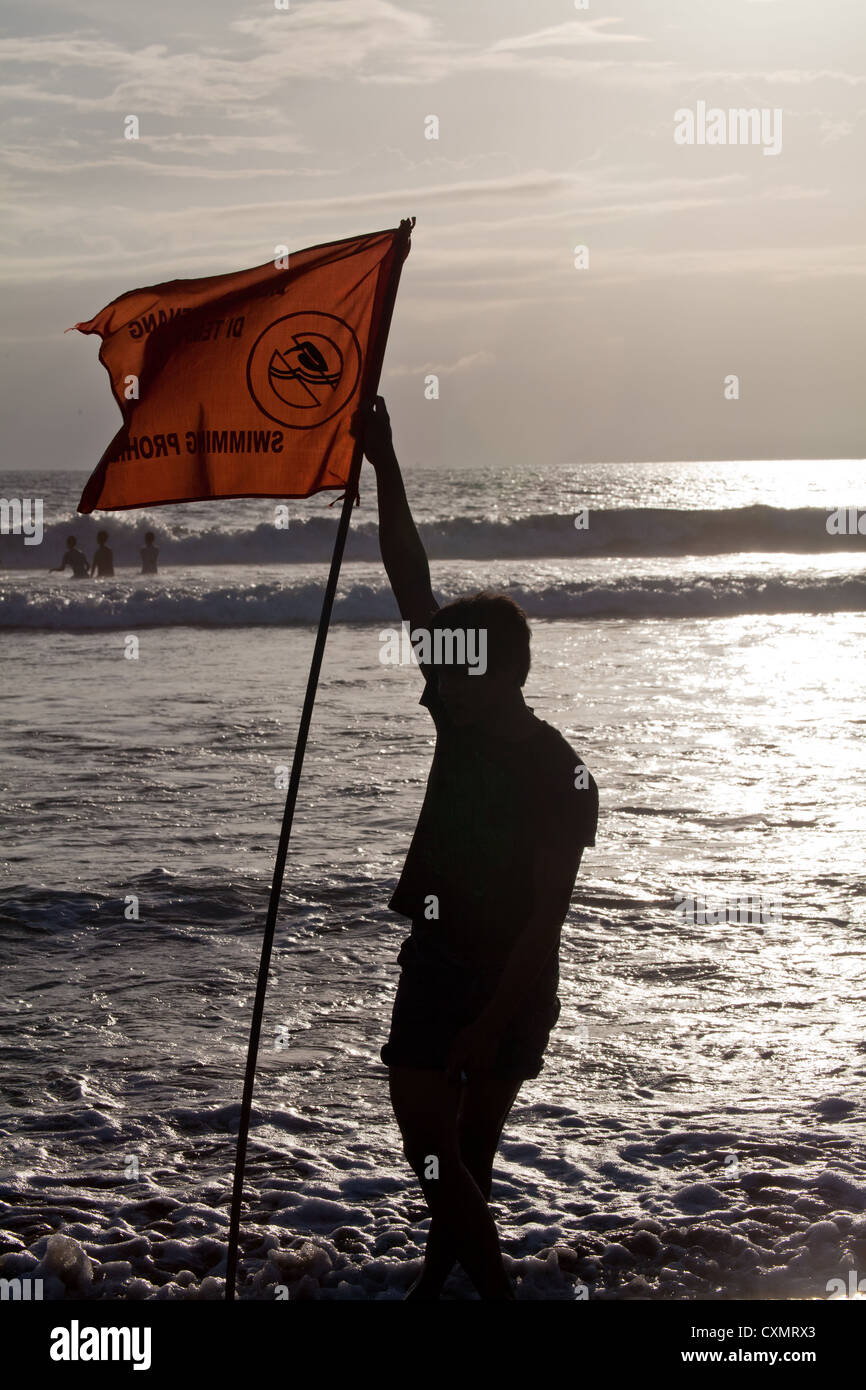Imagine a place where the sun paints the sky in fiery hues each evening, where the rhythm of crashing waves is a constant lullaby, and where vibrant energy pulses through every street. Welcome to Pantai Kuta, Bali – a destination that has captivated travelers for decades with its golden sands, legendary surf, and an atmosphere unlike any other. But beyond the picture-perfect postcards, Kuta also holds important lessons for every visitor, particularly concerning safety in its alluring waters. The Pantai Kuta red flag warning meaning is crucial: it signifies the presence of strong undertows or dangerous currents, making swimming unsafe and urging beachgoers to stay out of the water for their own safety. Heeding these warnings ensures your adventure remains exhilarating and secure.
Highlights: Where Golden Sands Meet Balinese Charm
Kuta is more than just a beach; it’s an experience. The moment you step onto its shores, you’re greeted by a symphony of sights and sounds. The long stretch of golden sand is a playground for sunbathers, beachcombers, and aspiring surfers alike. The Indian Ocean here offers consistent, rolling waves – perfect for beginners to catch their first ride, with numerous surf schools lining the beach ready to guide you.
Beyond the aquatic allure, Kuta’s atmosphere is undeniably electric. During the day, it’s a bustling hub of activity, with vendors selling everything from refreshing coconuts to intricate sarongs. As dusk approaches, the beach transforms into a theatre for one of Bali’s most iconic performances: the Kuta sunset. Spectators gather, cameras poised, to watch the sky ignite in a breathtaking display of oranges, pinks, and purples, casting a magical glow over the horizon. It’s a collective moment of awe, a testament to nature’s artistry.
Culturally, while Kuta is a global melting pot, you’ll still find glimpses of authentic Balinese life. Small offerings (canang sari) are placed daily, a reminder of the island’s spiritual heart. The warmth and genuine hospitality of the local people add an invaluable layer to your travel experience, making every interaction a memorable one.

Activities: Ride the Waves, Shop ’til You Drop, or Simply Unwind
So, what does a day in Kuta look like? For many, it starts with surfing lessons. Whether you’re a complete novice or looking to refine your technique, the gentle breaks and abundance of instructors make Kuta an ideal spot. Don’t worry if surfing isn’t your thing; simply splashing in the shallows or building sandcastles can be just as rewarding. Just remember to always observe the red flag warnings and swim only in designated safe zones.
When you’re not in the water, Kuta offers a plethora of other activities. The Beachwalk Shopping Center provides a modern retail therapy experience, while the smaller lanes and markets are perfect for haggling over unique souvenirs and local crafts. Fancy a massage? Beachside masseuses offer affordable relaxation, a perfect way to soothe tired muscles after a day of exploration. As evening falls, the area truly comes alive with a vibrant nightlife, offering everything from relaxed beach bars to lively clubs for those seeking a party atmosphere.
And let’s not forget the food! Kuta boasts an incredible array of culinary delights. From humble warungs (local eateries) serving up delicious Nasi Goreng (fried rice) and Mie Goreng (fried noodles) to upscale international restaurants, there’s something to satisfy every palate. Don’t miss trying some freshly grilled seafood, often caught that very day and served with a zesty sambal.
Travel Tips: Making the Most of Your Kuta Adventure
Planning your Bali tourism adventure to Kuta? Here are some essential tips:
- Best Time to Visit: The dry season, from April to October, offers the most sunshine and calmest seas, ideal for Kuta beach activities and enjoying the famous sunsets. However, Kuta’s lively spirit is present year-round.
- How to Get There: Ngurah Rai International Airport (DPS) is just a short drive away. Taxis and ride-hailing apps like Grab or Gojek are readily available to take you directly to your accommodation.
- Entrance Fees: There’s no direct entrance fee for Pantai Kuta itself, but you might encounter small parking fees if you’re driving a scooter or car.
- Safety First: Always pay attention to the lifeguard flags. A red flag means NO SWIMMING. This is not a suggestion but a critical safety directive due to strong currents. Swim between the red and yellow flags where lifeguards are present.
- Nearby Attractions: Kuta seamlessly blends into Legian and Seminyak, offering a continuous stretch of beach and a progressively more upscale vibe. For a cultural day trip, consider visiting the iconic Tanah Lot temple, perched on a rock formation in the sea.
- Local Delights & Souvenirs: Beyond the aforementioned Nasi and Mie Goreng, seek out a "Babi Guling" (suckling pig) experience for a truly local taste (though often found slightly outside Kuta in dedicated eateries). For souvenirs, look for intricate wood carvings, silver jewelry, vibrant sarongs, and local coffee beans.
Conclusion: Kuta Awaits Your Discovery
Pantai Kuta is a destination that truly has it all: breathtaking natural beauty, an infectious energy, endless activities, and a welcoming spirit. It’s a place where memories are made, whether you’re catching your first wave, witnessing a spectacular sunset, or simply soaking up the vibrant atmosphere. While its allure is undeniable, remember that understanding and respecting the Pantai Kuta red flag warning meaning is paramount for a safe and enjoyable experience. So, are you ready to immerse yourself in the dynamic heart of Bali? Kuta is calling, promising an unforgettable journey for every kind of traveler. Just pack your sunscreen, your sense of adventure, and your respect for the ocean – and prepare to fall in love with this iconic Balinese paradise!


